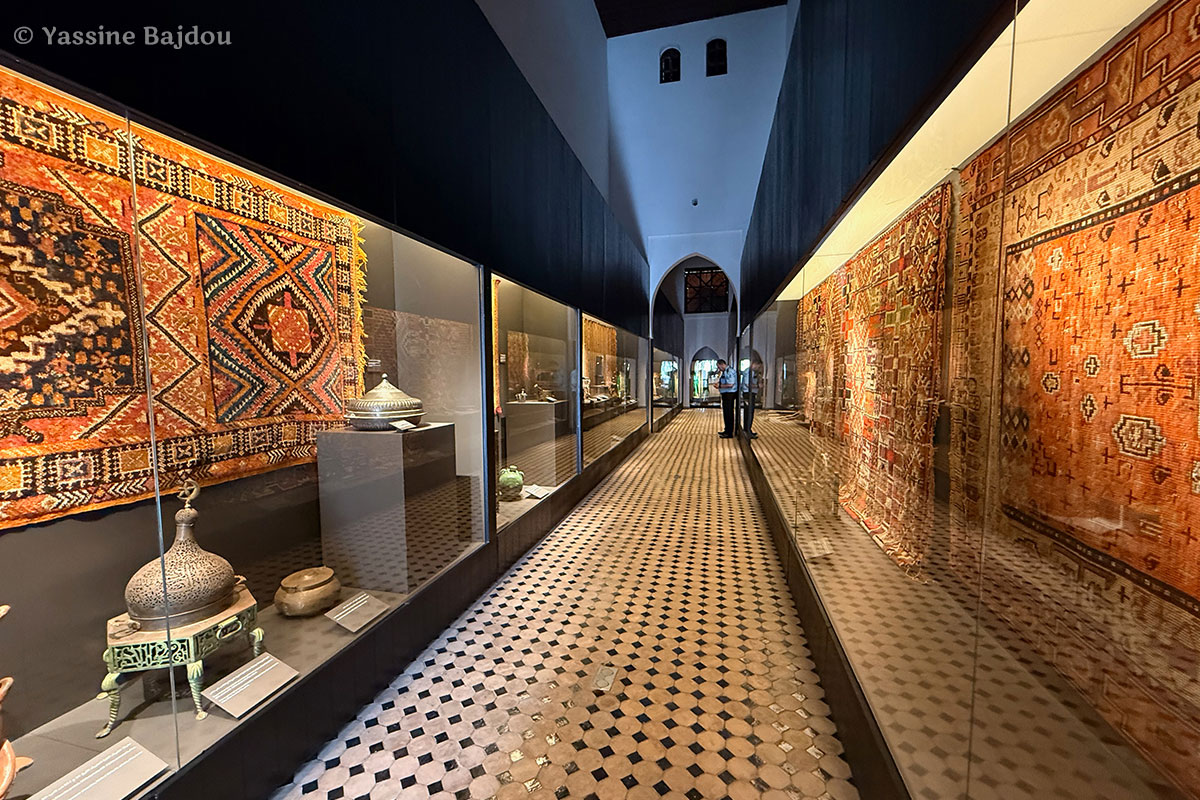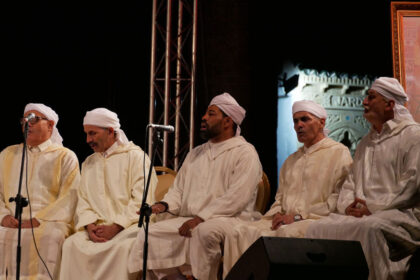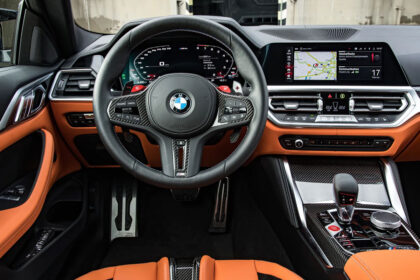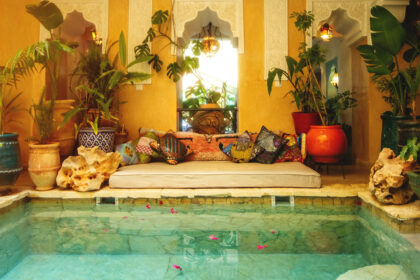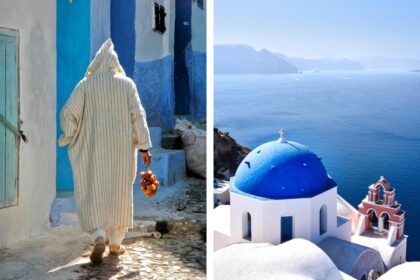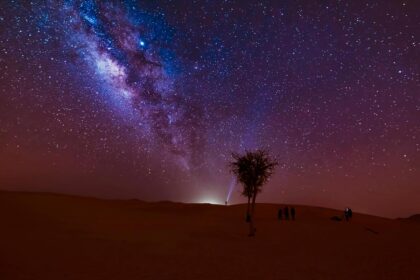Morocco stands as a living museum where centuries of history converge, creating one of the world’s most culturally rich destinations. As Vartan Gregorian once observed, “Libraries and museums are the DNA of our culture,” and nowhere does this ring truer than in the Kingdom of Morocco, where ancient Berber traditions blend seamlessly with Islamic heritage, colonial influences, and contemporary artistic expressions.
The country’s museums serve as windows into this remarkable cultural tapestry, offering visitors authentic encounters with Morocco’s artistic legacy that spans over a millennium. From the intricate zellige tilework of Fes to the contemporary galleries of Casablanca, Morocco’s best museums provide travelers with immersive experiences that go far beyond typical tourist attractions.
Morocco’s museum landscape has evolved significantly in recent years, with institutions like the Mohammed VI Museum of Modern and Contemporary Art in Rabat setting new standards for cultural presentation. These cultural institutions play a vital role in preserving Morocco’s heritage while making it accessible to both domestic and international audiences.
Libraries and museums are the DNA of our culture.
What distinguishes Morocco’s museums from their global counterparts is their unique ability to transform historical narratives into tangible experiences. The finest Moroccan museums don’t simply display artifacts behind glass cases; they create atmospheric journeys through time. Whether housed in restored riads with their traditional courtyards and fountains, or in purpose-built modern structures that complement Morocco’s architectural heritage, these institutions understand that context matters as much as content.
The architecture itself often tells a story. Many of Morocco’s premier museums occupy historical buildings – former palaces, traditional houses, or restored monuments – where the setting becomes part of the exhibition. This integration of form and function creates an authentic cultural immersion that transports visitors into Morocco’s rich past while providing scholarly insights into its artistic traditions.
Morocco’s museums also excel in their presentation of Islamic art and traditional crafts, with specialized collections that showcase everything from ancient manuscripts to contemporary Moroccan artists. The country’s strategic position as a crossroads between Africa, Europe, and the Middle East is reflected in museum collections that demonstrate cultural exchange spanning centuries.
For travelers seeking to understand Morocco beyond its souks and landscapes, the country’s museums offer curated journeys through Amazigh culture, Islamic civilization, Jewish heritage, and modern artistic movements. Each institution contributes to a broader understanding of what makes Morocco a unique cultural destination where tradition and innovation continue to intersect in meaningful ways.
Exploring Morocco’s Top Museums by Region
Morocco’s cultural institutions are strategically distributed across the kingdom’s major cities, each region offering distinct perspectives on the country’s artistic and historical heritage.
Museums in Fes
As Morocco’s spiritual and intellectual capital, Fes houses some of the country’s most significant cultural institutions, where traditional craftsmanship and Islamic scholarship take center stage.
Nejjarine Museum of Wooden Arts & Crafts
Nestled in the heart of Fes el-Bali, the Nejjarine Museum occupies a beautifully restored 18th-century funduq (caravanserai) that once served traveling merchants. This architectural gem now showcases Morocco’s finest collection of wooden arts and crafts, featuring over 1,000 pieces that span several centuries.
The museum’s wooden artifacts represent the pinnacle of Moroccan craftsmanship. Visitors encounter intricately carved cedar pieces from the Middle Atlas mountains, including traditional doors, window shutters, and furniture that demonstrate the sophisticated techniques passed down through generations. The collection features masterful examples of geometric patterns and calligraphic designs that define Islamic artistic traditions.
Interactive displays throughout the museum allow visitors to understand the tools and techniques used by master craftsmen. Multimedia presentations explain the significance of different wood types, from aromatic cedar to sturdy olive wood, while demonstrating how artisans achieve the complex inlay work that characterizes Moroccan woodcraft. The museum’s rooftop terrace offers stunning views over the medina, providing context for how these crafts evolved within Fes’s urban environment.
Dar Batha Museum
Housed in a 19th-century palace built by Sultan Hassan I, Dar Batha Museum stands as one of Morocco’s premier institutions for Islamic art and ceramics. The palace itself represents Moorish architecture at its finest, with its central courtyard and surrounding galleries creating an ideal setting for displaying Morocco’s artistic heritage.
The museum’s ceramic collection ranks among the world’s most important, featuring pieces from Fes’s renowned pottery workshops dating back to the 14th century. Visitors can trace the evolution of Moroccan ceramics through cobalt blue and white pieces that influenced pottery traditions across North Africa. The collection includes rare examples of Fes faience, distinguished by its brilliant colors and sophisticated glazing techniques.
The palace gardens provide a serene backdrop for contemplating the artistic treasures within. These AndaluMoroccan-style gardens, complete with fountains and orange trees, demonstrate how Moroccan artisans integrated natural beauty with architectural design. The museum’s architectural highlights include carved stucco work, painted wooden ceilings, and zellige tilework that showcase the craftsmanship that made Fes a center of artistic excellence.
Museums in Casablanca
Morocco’s economic capital offers a different perspective on the country’s cultural landscape, with institutions that celebrate both minority heritage and contemporary artistic expression.
Museum of Moroccan Judaism
The Museum of Moroccan Judaism holds the distinction of being the only Jewish museum in the Arab world, making it a unique cultural institution that preserves an important chapter of Moroccan history. Located in Casablanca’s Oasis neighborhood, this museum documents the 2,000-year presence of Jewish communities in Morocco.
The museum’s significance extends beyond its collections to its role in promoting intercultural dialogue and preserving minority heritage. Through carefully curated exhibits, visitors learn about the Jewish contribution to Moroccan society, from trade and craftsmanship to literature and music. The institution serves as a bridge between communities, demonstrating Morocco’s historical tradition of religious tolerance.
Key exhibits include traditional Moroccan Jewish ceremonial objects, manuscripts, photographs documenting community life, and reconstructed synagogue interiors. The museum features beautiful examples of Jewish ritual art adapted to Moroccan aesthetic traditions, including ornate Hanukkah lamps and ceremonial textiles that blend Jewish symbolism with Moroccan decorative motifs. Personal artifacts and family photographs create intimate portraits of Jewish life in cities like Fes, Meknes, and Casablanca.
Villa des Arts
Villa des Arts represents Casablanca’s commitment to contemporary culture, focusing on modern and contemporary art from Morocco and the broader Mediterranean region. This cultural center occupies a beautifully restored 1930s villa that exemplifies the architectural heritage of colonial-era Casablanca.
The venue’s focus on modern art provides a platform for emerging and established Moroccan artists to showcase their work alongside international exhibitions. The gallery spaces host rotating displays that explore themes ranging from traditional crafts reinterpreted through contemporary perspectives to completely avant-garde artistic expressions.
Temporary exhibitions and cultural events make Villa des Arts a dynamic cultural hub. The institution regularly hosts artist talks, workshops, and cultural evenings that bring together Casablanca’s creative community. These events create opportunities for visitors to engage directly with Morocco’s contemporary art scene while understanding how modern artists draw inspiration from the country’s rich cultural heritage.
Museums in Marrakech
The Red City’s museums reflect its status as both an imperial capital and a contemporary cultural destination, housed in architectural masterpieces that complement their extraordinary collections.
Museum of Marrakech
Occupying the stunning Dar Menebhi Palace, the Museum of Marrakech showcases the grandeur of 19th-century Moroccan architecture while housing significant collections of art and artifacts. The palace, built in the early 1900s by Moroccan nobleman Mehdi Menebhi, represents the height of traditional Moroccan craftsmanship with its soaring courtyards and intricate decorative elements.
The building’s history adds layers of meaning to the museum experience. After serving as a private residence, the palace later functioned as a girls’ school before its transformation into a museum in the 1990s. This evolution reflects Marrakech’s ability to adapt historical structures for contemporary cultural purposes.
The museum’s collections span centuries of Moroccan artistic achievement. Notable artifacts include ancient Berber jewelry, traditional textiles, and illuminated manuscripts that demonstrate the sophistication of Moroccan court culture. The contemporary art section features works by prominent Moroccan artists, creating dialogue between traditional craftsmanship and modern artistic expression. The central courtyard, with its massive bronze chandelier and marble fountain, creates a dramatic setting that enhances the museum experience.
Dar Si Said Museum
The former residence of Si Said, brother of Grand Vizier Ba Ahmed, now houses one of Morocco’s finest collections of traditional arts and crafts. This 19th-century palace exemplifies the refined taste of Morocco’s aristocratic class, with its cedar wood ceilings, marble columns, and intricate stucco work creating an atmosphere of refined elegance.
The museum’s traditional arts and crafts collections provide insights into Morocco’s regional variations in artistic expression. Visitors encounter carpets from the Middle Atlas, jewelry from the Anti-Atlas mountains, and pottery from Safi and Salé. These collections demonstrate how geographic factors influenced artistic traditions across Morocco’s diverse regions.
The architecture itself serves as part of the exhibition, with each room designed to showcase different aspects of Moroccan decorative arts. The visitor experience unfolds through a series of intimate spaces that recreate the atmosphere of aristocratic Moroccan life. The museum’s garden courtyard, complete with banana trees and fountains, provides a peaceful retreat that enhances understanding of how Moroccan architecture integrates indoor and outdoor spaces.
Museums in Rabat
As Morocco’s capital, Rabat hosts institutions that reflect the country’s position as a modern nation that honors its cultural heritage.
Mohammed VI Museum of Modern and Contemporary Art
Opened in 2014, the Mohammed VI Museum of Modern and Contemporary Art represents Morocco’s largest investment in contemporary cultural infrastructure. This state-of-the-art facility demonstrates Morocco’s commitment to supporting modern artistic expression while providing international-standard exhibition spaces.
The museum regularly features modern Moroccan artists who have shaped the country’s contemporary cultural landscape. Exhibitions highlight how Moroccan artists engage with global artistic movements while maintaining connections to local traditions. Featured artists often explore themes of identity, tradition, and modernity that resonate with Morocco’s position between Africa, Europe, and the Middle East.
The museum’s design incorporates sustainable architecture principles while creating flexible spaces for different types of exhibitions. Visitor amenities include a research library, educational facilities, and a café that extends the cultural experience beyond the galleries. The building’s modern aesthetic complements Rabat’s role as Morocco’s administrative capital while providing a contemporary counterpoint to the city’s historical monuments.
Kasbah Museum
Located within the Kasbah of the Udayas, this museum occupies a 17th-century palace that once served as a residence for Moroccan royalty. The building’s location within the historic kasbah provides spectacular views over the Bou Regreg River and the Atlantic Ocean, creating a dramatic setting for exploring Morocco’s imperial history.
The museum’s historical displays chronicle Morocco’s various dynasties and their contributions to the country’s cultural development. Exhibitions include artifacts from different periods of Moroccan history, from Almohad architectural fragments to Alaouite decorative arts. These collections help visitors understand the continuity of Moroccan cultural traditions across different ruling dynasties.
The cultural importance of the Kasbah Museum extends beyond its collections to its role in preserving the Udayas Kasbah as a living historical site. The museum serves as an interpretive center that helps visitors understand the significance of this UNESCO World Heritage site while appreciating its ongoing role in Rabat’s cultural life.
Other Noteworthy Museums
Morocco’s cultural landscape extends beyond major cities to include specialized institutions that preserve regional heritage and unique cultural expressions.
The Museum of the Saharan Cultures (Errachidia)
This specialized institution preserves the heritage and traditions of Morocco’s desert regions, focusing on the cultures that have thrived in the Saharan environment for centuries. The museum’s collections illuminate the sophisticated survival strategies and rich cultural traditions of nomadic peoples.
The museum showcases desert heritage through traditional clothing, tools, musical instruments, and artistic objects that demonstrate the creativity of Saharan cultures. Exhibitions explore how communities adapted to desert conditions while maintaining rich traditions of poetry, music, and craftsmanship. The museum serves as a cultural bridge between Morocco’s urban centers and its desert regions.
Traditional displays include examples of desert architecture, water management systems, and the traditional caravan routes that connected Morocco to sub-Saharan Africa. These exhibitions help visitors understand how the Sahara served as a highway for cultural and commercial exchange rather than a barrier to communication.
Tetouan Archaeological Museum
Located in Morocco’s northern region, this museum houses significant collections of Roman and Andalusian artifacts that reflect the area’s unique position as a gateway between Morocco and Iberia. The museum’s collections illuminate the complex cultural exchanges that occurred in northern Morocco over centuries.
Roman artifacts include mosaics, pottery, and architectural elements discovered at nearby archaeological sites. These pieces demonstrate the extent of Roman influence in northern Morocco while showing how local traditions persisted alongside imperial culture. The quality of the mosaics rivals examples found elsewhere in the Roman world.
Andalusian artifacts reflect the cultural flowering that occurred after the arrival of refugees from Islamic Spain. The museum houses examples of Andalusian ceramics, textiles, and architectural decorations that show how Iberian Islamic culture took root in northern Morocco. These collections help visitors understand Tetouan’s role as a repository of Andalusian culture that continues to influence Moroccan artistic traditions.
Tips for Museum Goers in Morocco
How to Prepare for Your Visit
Research your chosen museums before arrival to maximize your cultural experience. Review current exhibitions online, as many institutions rotate displays seasonally. Download museum apps where available, as institutions like the Mohammed VI Museum offer digital guides that enhance the visit experience.
Dress appropriately for museum visits, particularly when visiting institutions housed in religious or royal buildings. While formal dress codes are rare, respectful attire shows cultural sensitivity. Comfortable walking shoes are essential, as many museums involve extensive walking on various floor surfaces.
Bring a small bag for purchases from museum shops, which often feature unique items unavailable elsewhere. Many museums prohibit large bags in exhibition areas, so pack light or be prepared to use storage facilities.
Photography Rules
Photography policies vary significantly among Morocco’s museums, requiring attention to specific regulations at each institution. The Museum of Marrakech permits non-flash photography in most areas, while the Nejjarine Museum restricts photography of certain wooden artifacts to preserve them from light damage.
Flash photography is universally prohibited across Moroccan museums to protect delicate artifacts and artworks. Some institutions allow photography of architectural features but restrict images of specific exhibits or collections. Always check with museum staff before photographing, as policies may vary by gallery or temporary exhibition.
Many museums permit photography of courtyards, architectural details, and general interior spaces while restricting images of individual artworks or manuscripts. The Museum of Moroccan Judaism allows photography of the building and general displays but requests respect for religious artifacts.
Local Customs and Etiquette in Museums
Moroccan museum etiquette reflects the country’s cultural values of respect and consideration. Speak quietly in gallery spaces, as many visitors use museums for contemplation and learning. Remove hats when entering spaces that were formerly religious buildings or royal residences.
Show respect for cultural and religious artifacts by maintaining appropriate viewing distances and following any specific viewing instructions provided by museum staff. Some exhibits, particularly those featuring religious manuscripts or ceremonial objects, may have specific protocols for respectful viewing.
Tipping museum guides is customary when you receive personalized service, with 50-100 MAD being appropriate for comprehensive tours. However, this is discretionary and should reflect the quality of service received.
Combining Museum Visits with Other Local Experiences
Morocco’s best museums are typically located near other cultural attractions, making it easy to create comprehensive cultural itineraries. The Museum of Marrakech sits within walking distance of the Koutoubia Mosque and Jemaa el-Fnaa square, allowing visitors to experience both historical artifacts and living culture.
In Fes, combine visits to the Nejjarine Museum and Dar Batha with exploration of the medina’s traditional crafts workshops. This combination provides context for museum displays while supporting local artisans who continue traditional techniques.
Plan museum visits around meal times to experience local cuisine. Many museums are located near traditional restaurants or cafés that serve authentic Moroccan dishes, enhancing the cultural immersion experience.
Frequently Asked Questions
Which museum in Morocco offers the most extensive collection of Islamic art?
Dar Batha Museum in Fes houses Morocco’s most comprehensive collection of Islamic art, spanning ceramics, textiles, manuscripts, and decorative objects from various periods of Moroccan history. The museum’s setting in a former royal palace provides authentic context for understanding how Islamic artistic traditions developed within Moroccan court culture.
Are there any museums in Morocco with free entrance days?
Several museums offer free or reduced admission on specific days. The Villa des Arts in Casablanca frequently provides free admission to community-focused exhibitions. Some government museums offer reduced rates during National Museums Week, typically held in May. The Museum of Moroccan Judaism operates on a donation basis, making it accessible regardless of budget constraints.
Can visitors book guided tours in advance?
Most major museums accept advance bookings for guided tours, particularly for groups of five or more people. Individual visitors can often arrange guided tours with 24-48 hours notice. The Mohammed VI Museum in Rabat offers online booking systems for specialized tours, while smaller institutions like the Nejjarine Museum prefer phone or in-person arrangements.
Which Moroccan museum is best for families with children?
The Mohammed VI Museum of Modern and Contemporary Art in Rabat provides the most family-friendly experience, with interactive displays, educational programs, and spacious galleries that accommodate families. The museum’s modern facilities include family restrooms and areas where children can rest. The Museum of Marrakech also appeals to families due to its dramatic architecture and central courtyard that captivates young visitors.
Are museum guides available in English or other languages?
English-speaking guides are available at most major museums, though advance booking ensures availability. The Museum of Marrakech, Nejjarine Museum, and Mohammed VI Museum regularly provide English-language tours. French-speaking guides are widely available across all institutions. Spanish and German guides can be arranged at larger museums with sufficient notice.
What are the must-see pieces in the Museum of Marrakech?
The Museum of Marrakech’s highlights include the massive bronze chandelier in the central courtyard, rare illuminated Quran manuscripts from the 12th century, and the collection of traditional Berber jewelry from the Atlas Mountains. The museum’s contemporary art section features works by Moroccan masters like Ahmed Cherkaoui and Mohamed Melehi, providing insight into Morocco’s modern artistic movements.
Conclusion
Morocco’s museum landscape offers travelers an unparalleled opportunity to engage with one of the world’s richest cultural heritages. From the intricate woodwork displays at Fes’s Nejjarine Museum to the contemporary masterpieces at Rabat’s Mohammed VI Museum, these institutions provide authentic encounters with Moroccan artistic traditions that span over a millennium.
The diversity of Morocco’s best museums ensures that every traveler can find cultural experiences that resonate with their interests. History enthusiasts will find treasure troves of Islamic art and imperial artifacts, while contemporary art lovers can explore how modern Moroccan artists interpret traditional themes through innovative approaches. The country’s unique position as a cultural crossroads is reflected in collections that demonstrate centuries of artistic exchange between Africa, Europe, and the Middle East.
When planning your Moroccan adventure, consider museums as essential cultural experiences rather than optional activities. These institutions provide context that enhances understanding of Morocco’s living culture, from the geometric patterns visible in contemporary architecture to the traditional crafts still practiced in medina workshops. The knowledge gained through museum visits enriches every subsequent cultural encounter throughout your journey.
Choose museums based on your specific interests and travel itinerary, but remain open to unexpected discoveries. A ceramics enthusiast might find inspiration in Dar Batha’s pottery collection, while someone interested in minority cultures could gain valuable insights at Casablanca’s Museum of Moroccan Judaism. The most rewarding approach involves balancing major institutions with smaller, specialized museums that offer intimate perspectives on particular aspects of Moroccan culture.
Morocco’s commitment to preserving and presenting its cultural heritage through world-class museums demonstrates the country’s understanding that cultural tourism creates meaningful connections between visitors and destinations. These institutions serve as bridges between Morocco’s illustrious past and its dynamic present, offering travelers the opportunity to engage with authentic cultural expressions that continue to evolve while honoring traditional foundations.







